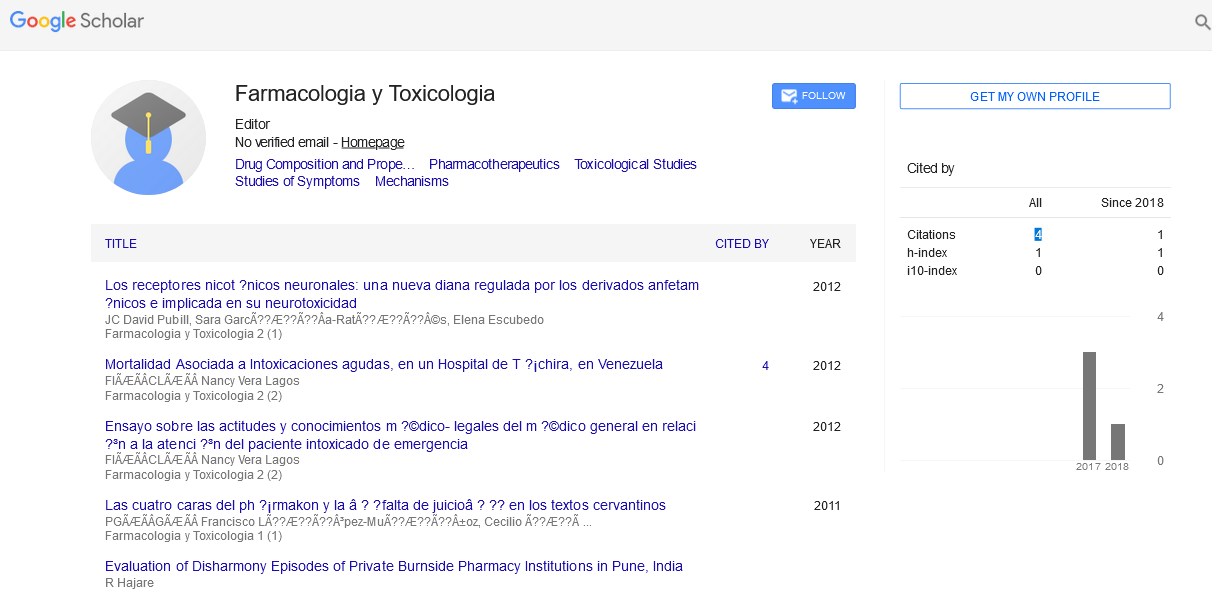Perspective - (2024) Volume 14, Issue 6
Mutagenicity: A Comprehensive Overview
Nevine Fathy*
Department of Genetic Toxicology, University of Bahaudhin, Multan, Pakistan
*Correspondence:
Nevine Fathy, Department of Genetic Toxicology, University of Bahaudhin, Multan,
Pakistan,
Email:
Received: 07-Aug-2024, Manuscript No. IPFT-24-15137;
Editor assigned: 12-Aug-2024, Pre QC No. IPFT-24-15137 (PQ);
Reviewed: 26-Aug-2024, QC No. IPFT-24-15137;
Revised: 02-Dec-2024, Manuscript No. IPFT-24-15137 (R);
Published:
30-Dec-2024
Introduction
Mutagenicity is a fascinating and crucial concept in genetics
and environmental science. It refers to the ability of certain
chemical, physical or biological agents to cause changes or
mutations, in the DNA sequence of an organism. These
mutations can lead to a variety of consequences, ranging from
benign variations to severe genetic disorders or cancers. This
article delves into the mechanisms, causes and implications of
mutagenicity, offering a thorough understanding of its
significance.
Description
Mechanisms of mutagenicity
Mutations are alterations in the DNA sequence that can occur
naturally during DNA replication or be induced by external
factors. The mechanisms through which mutations arise are
diverse and complex. One primary mechanism is the
incorporation of incorrect nucleotides during DNA replication.
The DNA polymerase, the enzyme responsible for replicating
DNA, occasionally makes mistakes, leading to point mutations
where a single nucleotide is replaced by another.
Another mechanism involves the physical damage to DNA
caused by external agents. For instance, Ultraviolet (UV)
radiation from the sun can cause thymine dimers, where two
adjacent thymine bases bond together, disrupting the DNA
structure and leading to replication errors. Similarly, ionizing
radiation, such as X-rays and gamma rays, can cause breaks in
the DNA strands, which can result in mutations if not properly
repaired.
Types of mutations
Mutagenicity can lead to various types of mutations, each
with different potential impacts on the organism. Point
mutations, as mentioned earlier, involve changes to a single
nucleotide. These can be silent mutations, which do not alter
the amino acid sequence of a protein or missense mutations,
which change one amino acid in the protein, potentially altering
its function. Nonsense mutations, another type of point
mutation, result in a premature stop codon, leading to truncated
and usually nonfunctional proteins.
Frameshift mutations, caused by insertions or deletions of
nucleotides, shift the reading frame of the genetic code, altering
every subsequent amino acid and typically resulting in
nonfunctional proteins. Larger-scale mutations include
duplications, deletions, inversions and translocations of large
DNA segments, which can disrupt multiple genes and regulatory
regions, often leading to significant phenotypic changes.
Detection and measurement of mutagenicity
The detection and measurement of mutagenicity are crucial
for assessing the potential risks of various substances and
environmental factors. Several assays and tests have been
developed to evaluate mutagenic potential.
Ames test: One of the most widely used tests for chemical
mutagenicity is the Ames test. Developed by Bruce Ames in the
1970s, this test uses strains of the bacterium Salmonella
typhimurium that carry mutations making them unable to
synthesize the amino acid histidine. When exposed to a
potential mutagen, if the chemical induces mutations that
restore the bacteria's ability to produce histidine, it indicates
mutagenic potential.
Micronucleus test: The micronucleus test is used to detect
chromosomal damage in cells. This test measures the formation
of micronuclei, small nuclei that form outside the main nucleus
during cell division due to chromosome fragments or whole
chromosomes not being incorporated into the daughter nuclei.
Comet assay: The comet assay, also known as single-cell gel
electrophoresis, detects DNA strand breaks in individual cells.
Cells are embedded in agarose gel, lysed to release DNA and
subjected to electrophoresis. Damaged DNA migrates further,
forming a "comet tail" shape, which can be quantified to assess
DNA damage.
Implications of mutagenicity
Mutagenicity has profound implications for human health,
environmental safety, and evolutionary biology.
Human health: Mutagenicity is closely linked to cancer
development. Many carcinogens are also mutagens, as they
cause mutations that can lead to uncontrolled cell growth and
tumor formation. Understanding mutagenicity helps in
identifying and regulating carcinogenic substances, thereby
reducing cancer risk. Additionally, mutagenicity plays a role in
genetic disorders. Mutations in germ cells can be passed to offspring, leading to inherited diseases such as cystic fibrosis,
sickle cell anemia and Huntington's disease.
Environmental Safety: Assessing the mutagenic potential of
environmental pollutants is essential for protecting ecosystems
and human populations. Chemicals released into the
environment, whether through industrial processes, agricultural
practices or waste disposal, can pose significant mutagenic risks.
Regulatory agencies use mutagenicity data to set safety
standards and limit exposure to harmful substances.
Evolutionary biology: Mutagenicity is a driving force in
evolution. Mutations generate genetic diversity, providing the
raw material for natural selection. While many mutations are
harmful, some confer advantageous traits that can enhance
survival and reproduction, driving the adaptation of species to
changing environments.
Conclusion
Mutagenicity is a critical area of study with far-reaching
implications for human health, environmental safety and
evolutionary biology. By understanding the mechanisms, causes
and effects of mutagenicity, scientists can better assess the risks
posed by various agents, develop strategies to mitigate those
risks and harness the power of mutations for beneficial
purposes, such as medical research and biotechnology. The
study of mutagenicity not only sheds light on the fundamental
processes of life but also equips us with the knowledge to
safeguard our health and the environment.
Citation: Fathy N (2024) Mutagenicity: A Comprehensive Overview. Farmacologia Toxicologia, Vol.14 No.6: 052





